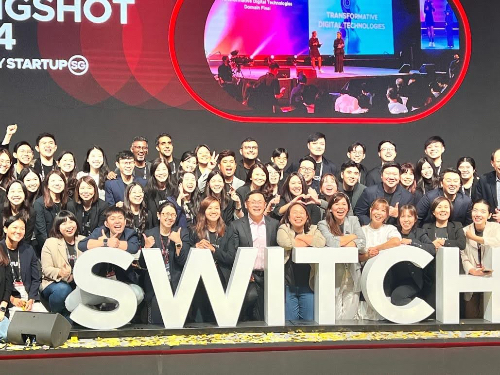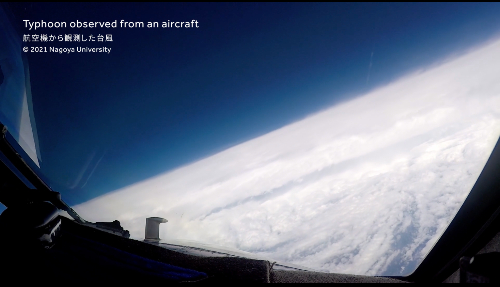J-STORIES - Due to its tragic past, Hiroshima has become the center for world peace and a reminder of the dangers of nuclear weapons. To ensure that there will be a future waiting for them, students from Hiroshima are taking matters into their own hands—literally and figuratively.
“The Thousand Crane Club" is an extracurricular activity group based at Hiroshima International School whose members have been taking origami cranes on behalf of senders from around the world. “Origami” is the Japanese art of paper folding.
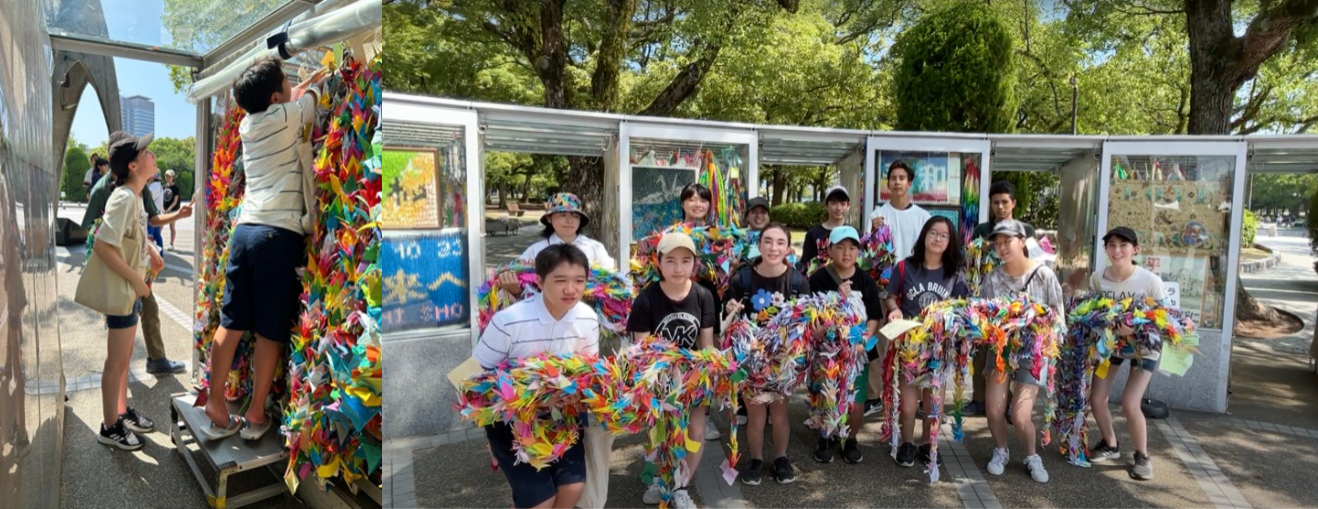
Paper cranes have become a symbol of peace because of the story of Sadako Sasaki, a Hiroshima atomic bomb survivor. She was irradiated by the explosion at the age of two and died of leukemia 10 years later. At her hospital bed, she folded a thousand paper cranes, as it was believed doing so would grant a wish. Many of the paper cranes sent to the Crane Club were folded by students overseas who learned about Sadako Sasaki's experience in peace studies.

Paper cranes from around the world hang at Peace Memorial Park at Hiroshima, a memorial dedicated to the horrors of the bombing. Approximately 10 million cranes are sent from Japan and overseas, and 2023 marked the highest number of cranes sent.
The number of visitors to the Peace Memorial Museum (Atomic Bomb Museum) reached the highest record in history, with the percentage of international visitors reaching a record over 30%.
The Thousand Cranes Club
The club consists of about 40 Grade 7 to Grade 12 students with diverse nationalities, including Japan, Korea and Ukraine. The members string the cranes and refold the cranes sent to the school before bringing them to the park. They also share photos and videos of their activities back to the senders with their words of gratitude and on their Instagram account (@thethousandcraneclub).
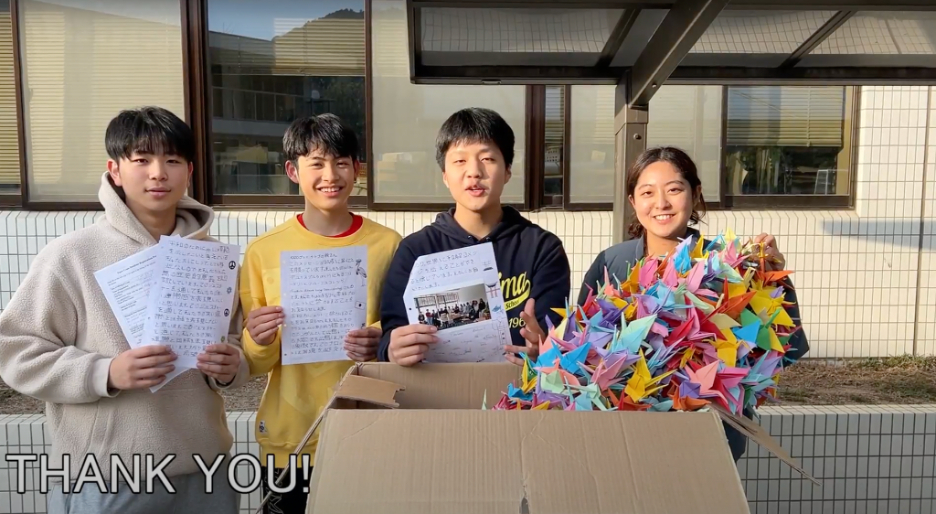

According to Hiroshima International School, the Crane Club's activities began in 1985. The school received paper cranes from U.S. and Canadian schools that were made as part of peace education. Bringing the origami to the park was a temporary volunteer activity, but it developed into an annual student-run activity with a focus on peace activities. So far, the club has received cranes from schools in 37 cities in 14 countries, mostly in Europe and the United States.
St. Andrews Lutheran College, a school in Australia, shared that they chose Crane Club to deliver the cranes for them because of the students’ ability to communicate in English, as well as their skills in stringing the cranes together and their photo and video documentation.
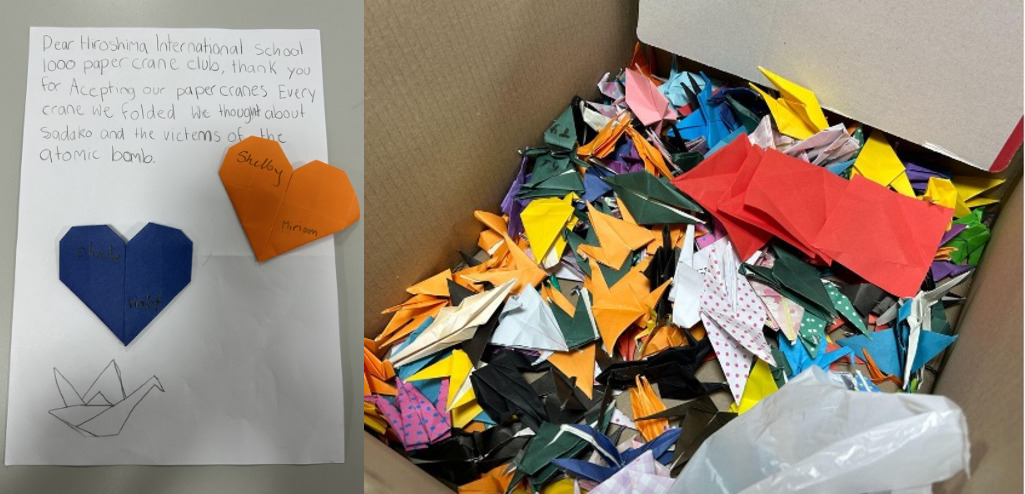
Students and their peace mission
Yoko Yanagi, the club's advisor and a Japanese teacher at the school, said that sending responses is the mission of the Crane Club. “It is meaningful to let the sender, who put their thoughts and wishes for peace in their cranes, know that the people of Hiroshima have received them,” she explained.
The students believe the internationality of their members is what makes Crane Club special. "The fact that the students of our school come from all over the world is unique,” says Shiori Hirata, a Grade 11 student who’s been in the club for 5 years. She added that the diversity of backgrounds at Hiroshima International School “is a valuable environment where you can hear the opinions of different people.”
Jundai Okano, a G12 student, went to Noborimachi Elementary School, the same school as Sasaki Sadako. “It was natural that I would be involved in peace activities since I am from Hiroshima,” he said, explaining his decision to join the club. He said he had many opportunities to think about peace and take action, including the chance to hear directly from hibakusha (atomic bomb survivor), the term for the survivors of the atomic bomb explosion.
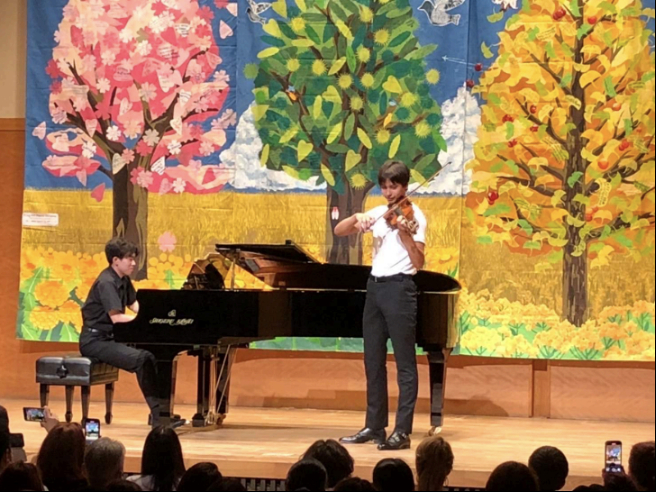
"The act of folding origami cranes can unite people with different ideas and backgrounds,” said Taishi Hiraishi, the club’s vice director and a G12 student. “What is important is not the shape of the cranes, but the awareness of world peace and the desire to fold them," he added. He hopes more schools and individuals will join the activity.
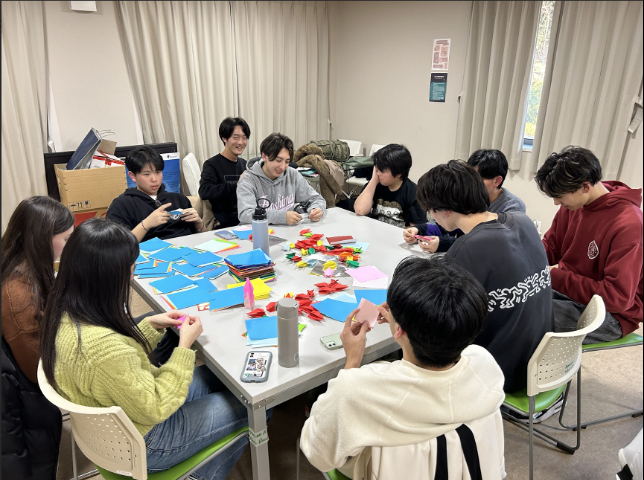
The club’s director, G12 student Alina Shige-Hird, commented: "I think that by spreading the idea of peace from Hiroshima and Nagasaki through the origami crane activity, we can eventually spread the idea of peace on a larger scale." She added that talking about peace or the story of Sadako while folding the cranes would be good.
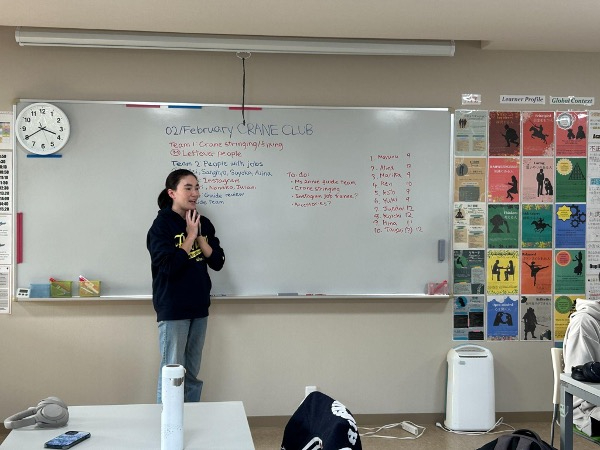
A Japanese international school for global peace
The students’ awareness of peace activities stems from the policy of teachers at Hiroshima International School to teach the importance of peace. According to Yanagi, students have many opportunities to think about peace, such as reading Barefoot Gen, a manga based on the atomic bombing experience, and hearing stories of researchers who were involved in the study of the atomic bombing, which the teachers use as materials in classes.
Yanagi reminds students to avoid criticizing certain countries or individuals during their Crane Club activities, like when they send messages of peace to Ukraine on social media or when they take international guests on a guided tour of the Memorial Park.
This advice was based on her own experience. During a peace study at an elementary school, she was once blamed by her classmates for the atomic bombing because they learned that she grew up in the United States.
“This is a necessary consideration because we are an international school, a community of concerned individuals from diverse backgrounds," she said. “I don't want the senders’ experience during their international exchange in Hiroshima to become bad memories because of criticisms," she added.
Yanagi is hopeful about the potential of the club's activities. “I hope the international exchange through paper cranes with the Crane Club will encourage people who will be in a position to hold the nuclear button in the future to rethink using nuclear weapons. I hope that our activity will become a catalyst for an anti-nuclear decision,” she said.
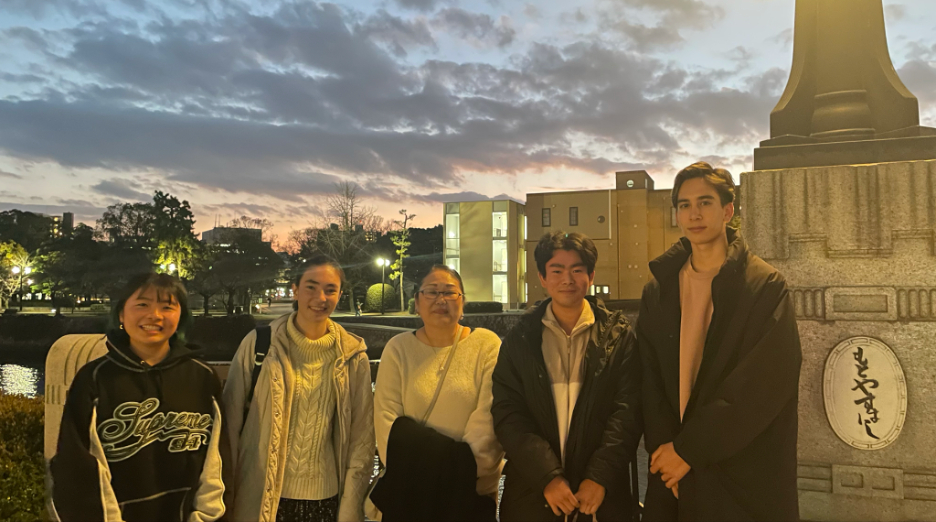
Translation by Desiderio Luna
Editing by Takanori Isshiki
Top page photo by The Thousand Crane Club
For inquires about this article, please contact us at jstories@pacificbridge.jp
***
Click here for the Japanese version of the article.


_smallthumbnail.jpg)



![[Podcast] Why SaaS is growing so much faster in Japan — Interview with Shinji Asada at One Capital (Part 3)](https://storage.googleapis.com/jstories-cms.appspot.com/images/1734414331031unnamed_bigthumbnail.jpg)


![[Podcast] Why SaaS is growing so much faster in Japan — Interview with Shinji Asada at One Capital (Part 2)](https://storage.googleapis.com/jstories-cms.appspot.com/images/1734080067275unnamed-10_bigthumbnail.jpg)
![[Podcast] Why SaaS is growing so much faster in Japan — Interview with Shinji Asada at One Capital (Part 1)](https://storage.googleapis.com/jstories-cms.appspot.com/images/1733460280070unnamed-2_bigthumbnail.jpg)
![[Tokyo Updates] Turning Tempura Oil into Fuel: 30 Years of Environmental Efforts by Tokyo Entrepreneur](https://storage.googleapis.com/jstories-cms.appspot.com/images/1729231881027Oil%20_bigthumbnail.jpeg)



